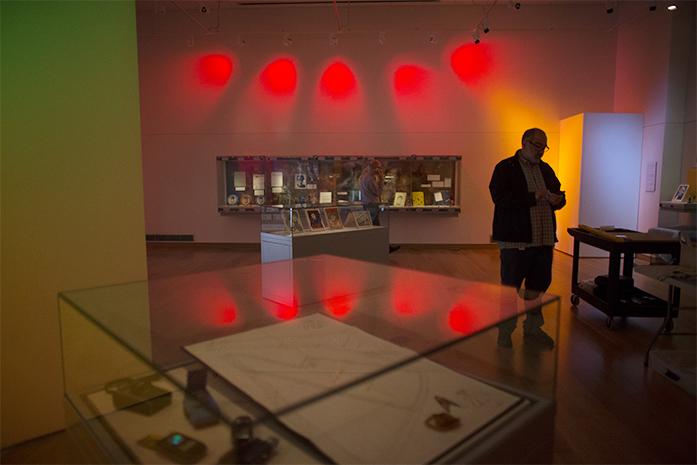At 5 p.m. today in the IMU, computer-science Assistant Professor Kyle Rector and UI Librarian Brad Ferrier will discuss ways to make art accessible to those with disabilities in “smART Talks: Art and Accessibility. This event is one of a series of SmART Talks throughout March.
Veronica Smith, the coordinator of the SmART Talks program and an assistant curator at the UI Museum of Art, teaches a global art history course at Kirkwood College. She often takes her students on field trips and has experts come in to speak. The SmART series began because she wanted to bring a similar experience to the public with a greater focus on the Art Museum.
“Nearly 12 percent of Iowa’s population lives with some kind of disability,” Smith said in an email to The Daily Iowan. “Additionally, nearly every person will experience disability at some time in their lives — we all eventually lose our hearing, our eyesight, our memory. As a public museum, the University of Iowa Museum of Art has the privilege and duty of providing access to the collections for all Iowans. To adequately do so, we must think of access in all senses of the word.”
RELATED: The University of Iowa Museum of Arts presents Bac to the future
Rector worked on research to make visual art more available to the blind. Her research has focused on finding ways to tie verbal description, music, and sound effects into the museum experience. She said smaller museums usually don’t have a lot of resources, and low-vision attendees must go with a guide for the art to be accessible.
“The idea is that as we get closer to a piece of art, we see more visual detail,” Rector said. “So why not have it be as we get closer to a piece of art, we hear more detail in the audio.”
Researchers began testing a system that would play background music first, and while approaching the art, it would move to sound effects of objects pictured in the art, and finally a verbal description of the art at the closest point.
However, after trials, they discovered that subjects wanted to hear a verbal description before anything else, so they could know what they were getting into. Rector said that all discoveries like this help, because researchers are still in the conceptual phase of the technology.
RELATED: Alumnus and wife honored through art museum naming
“We aren’t making a product to be sold, we are trying to say, ‘Guys, this can be done and we should think about doing this in the future in a more robust fashion,’ ” Rector said.
Ferrier, a stroke survivor who works in the UI libraries, has researched what kinds of technologies other museums have. He said most museums don’t have much more than a statement on their websites offering help to any guests with disabilities.
“A lot of them, as far as I can tell, have very little, at least on their websites, including us,” Ferrier said. “We don’t have much but a statement that says, ‘If you need help, assistance is available.’”
Some museums have more, he said. The Chazen Museum in Madison, Wisconsin, has resources for those with mobility issues, hearing issues, and vision issues — which is what Ferrier wants to see the UI museum to have. The UI is set to build a new art museum beginning this year, and Ferrier hopes the technologies can be implemented in the new facility.
RELATED: Editorial: The Americans with Disabilities Act is under attack
Where: IMU, Richey Ballroom
When: 5p.m. today
Admission: Free



